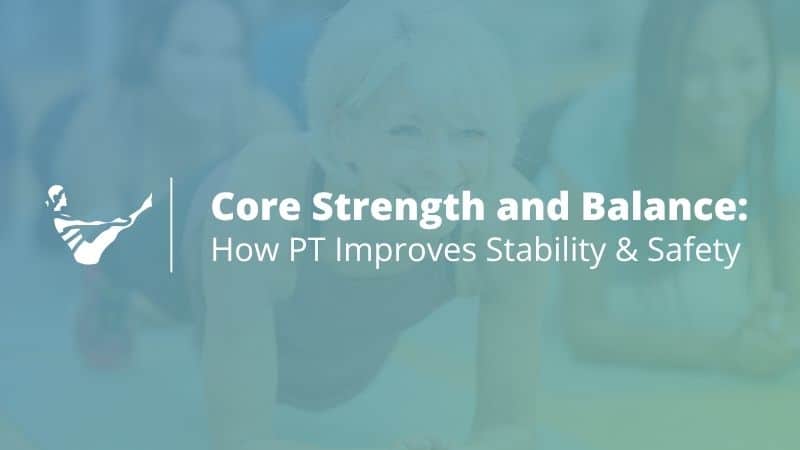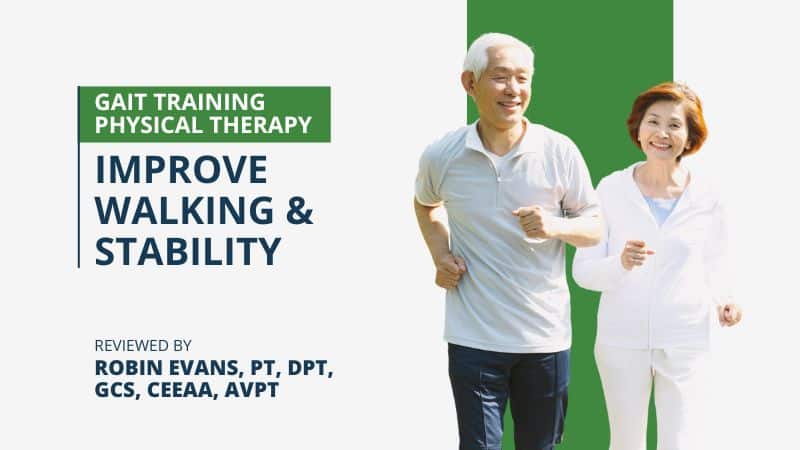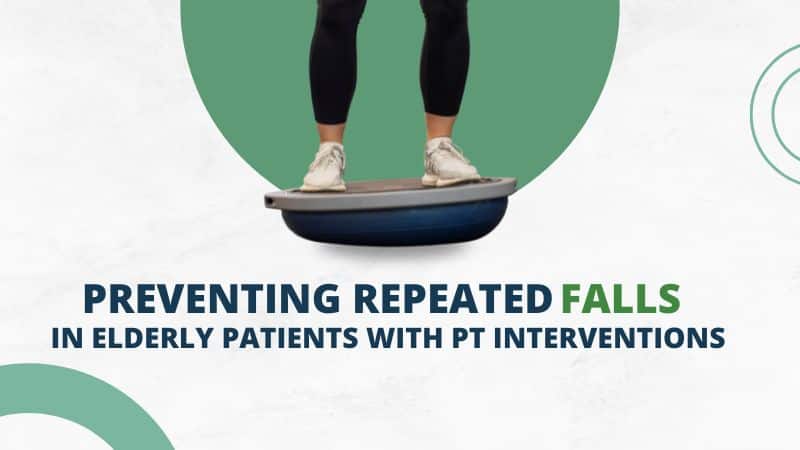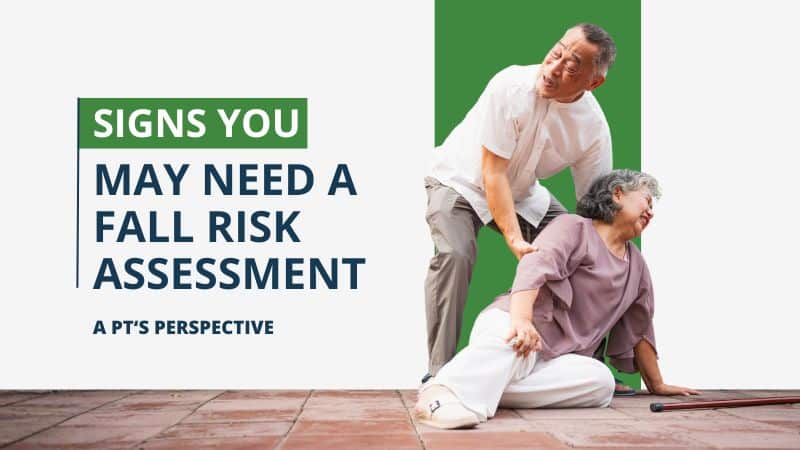Balance isn’t just about preventing falls – it’s about moving through your day with confidence. Reaching for something on the top shelf. Walking across the lawn without second-guessing your footing. Climbing the stairs without holding your breath.
But as we age, that sense of sure-footedness doesn’t always come so easily. Muscle mass declines. Joints get a little stiffer. Vision, reflexes, and even the inner ear start to change. And sometimes, those small shifts add up to a big difference in how steady we feel.
That’s where balance exercises come in. When done regularly – and with the right guidance – these simple movements can help older adults rebuild strength, improve coordination, and reduce the risk of falls. At Ivy, our physical therapists create personalized programs that meet you where you are and grow with you.
Why Balance Training Is Crucial for Older Adults
Falls send millions of older adults to the emergency room each year. In fact, 1 in 4 people over age 65 will experience a fall this year alone, according to the Centers for Disease Control (CDC). Many of those falls are preventable.
Balance issues can come from a mix of physical and medical factors:
- Weakness in the legs or core
- Loss of sensation in the feet
- Inner ear or vestibular dysfunction
- Side effects from medications
- Neurological conditions like Parkinson’s or stroke
But here’s what’s encouraging: consistent balance exercises have been shown to improve gait, posture, and stability – even in adults over 80 (Granacher et al., 2015). And the earlier you start, the more likely you are to stay active and independent.

Need help getting started? Schedule a balance and fall risk assessment at an Ivy Rehab clinic near you.
Best Physical Therapy Exercises to Improve Balance

Physical therapists use targeted balance exercises to help strengthen muscles, activate the core, and retrain the brain-body connection. These movements can be done at home, but it’s smart to get evaluated first so your program is safe and effective.
Here are six PT-recommended exercises that form the foundation of many programs for seniors.
Before You Begin: These exercises are meant to be general examples and may not be right for everyone. If you have balance issues, dizziness, or a history of falls, it’s best to consult with a physical therapist or healthcare provider before starting a new exercise routine.
1. Single-Leg Stance (With Support as Needed)
A classic move for ankle, knee, and hip stability.
- Stand next to a counter or sturdy chair.
- Lift one foot off the ground and hold for up to 30 seconds.
- Switch sides and repeat.
Over time, this exercise helps improve joint control and reaction time – key components of fall prevention (National Institute on Aging).
2. Heel-to-Toe Walk (Tandem Walk)
Trains coordination and body awareness.
- Walk in a straight line, placing the heel of one foot directly in front of the toes of the other.
- Keep your head up and eyes forward.
- Use a wall or railing for balance if needed.
This balance exercise mimics real-life movement and is especially helpful for navigating tight spaces or uneven ground.
3. Sit-to-Stand Transitions
Combines balance and functional strength.
- Start seated in a firm chair with feet flat.
- Stand up slowly without using your hands, then sit back down with control.
- Repeat 10 times.
Sit-to-stand transitions build strength in the hips and thighs while helping reinforce safe movement patterns for daily life.
4. Marching in Place
Builds dynamic balance and hip strength.
- While standing, lift one knee at a time to waist height.
- Alternate legs in a slow, controlled motion.
- Use a support surface and progress to eyes-closed or foam surface if guided by a physical therapist.
This is a versatile movement that PTs often adjust based on ability.
5. Standing Weight Shifts
Improves center-of-gravity control.
- Stand with feet shoulder-width apart.
- Slowly shift weight from side to side, then front to back.
- Focus on smooth transitions and posture.
This movement helps improve awareness of your body position and reactions to changes in balance.
6. Balance on an Unstable Surface (e.g., Foam Pad)
For more advanced progression – best done under supervision.
- Stand on a foam pad or cushion with feet shoulder width apart.
- Maintain balance without holding on; progress to one leg as safe.
- Used by PTs for neuromuscular re-education.
How Often Should You Do Balance Exercises?
Like any other skill, balance improves with practice. Most physical therapists recommend performing balance exercises at least 3 to 5 times per week – even if it’s just for 10 to 15 minutes at a time.
Consistency is more important than intensity. It’s better to do a little bit regularly than to overdo it once a week.
Just as with strength or flexibility, progress builds over time. Stay patient and steady – and celebrate small wins, like fewer stumbles or more confident steps on uneven ground.
How Physical Therapists Customize Balance Training
At Ivy Rehab, we begin with a thorough evaluation to understand what’s impacting your balance. This includes assessments of posture, strength, vision, sensation, and inner ear function.
Based on what we find, we’ll build a customized program that may include:
- Gait and strength training
- Core activation and balance board work
- Visual or vestibular retraining
- Home safety education and fall prevention tips
Programs are adapted as you improve – ensuring you’re always challenged safely.

When to Seek Help from a Physical Therapist
You don’t have to wait for a fall to take action. Consider seeing a physical therapist if:
- You’ve had a fall or near-fall recently
- You feel dizzy or unsteady while walking
- You avoid stairs, curbs, or uneven ground
- You’ve had surgery or a neurological diagnosis that affects balance
- You’re using walls or furniture to stay upright
Our team can assess your needs and guide you through safe, effective balance exercises for seniors designed to restore confidence.
Conclusion
Balance training isn’t just about staying upright – it’s about maintaining the freedom to move through your day with ease. When you feel confident on your feet, you’re more likely to stay active, keep doing the things you love, and reduce your risk of falls or injury.
The right balance exercises can help older adults regain control, prevent setbacks, and feel more at ease in their bodies. And working with a physical therapist ensures your program is safe, personalized, and designed around your goals.
If you or a loved one is noticing changes in balance, don’t wait for a fall to make a change. Let our team help you move forward – safely and confidently.
Take the first step – schedule an assessment with an Ivy Rehab physical therapist today.








